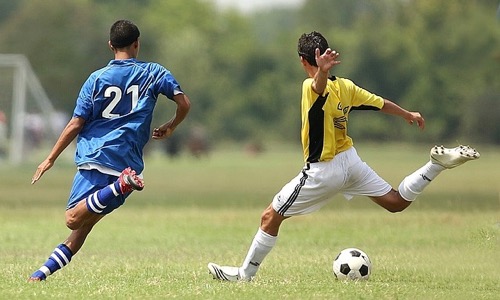The cost of parenting is pricey, especially if you have kids who play sports.
Youth sports in the U.S. tops professional sports leagues like the NFL with more than a $17 billion market value, according to WinterGreen Research, a market research firm that tracks the industry.
It’s more than just its huge market value. Youth sports offers a plethora of business stories that run deep, from the costs of maintaining lights at parks and the benefits local businesses see by sponsoring teams.
Healthy market value, uneven distribution
In recent years, Americans have grown disenchanted with football. Controversies have led to a decline in viewership and attendance..
Pop Warner, the largest youth football organization, is no exception.
According to a 2018 report by the Sports and Fitness Industry Association, participation in tackle football for kids between the age of 6 and 17 has been dropping by about five percent every year from 2012 to 2017.
Cronkite News reported last month that a Phoenix Pop Warner team was wrestling to stay afloat, as less boys participated in football. Drops in participation, such as the one in Phoenix, affects how teams cover costs, such as keeping the lights on at parks and managing fees to pay for equipment.
While the market value of youth sports seems impressive, all that wealth is not distributed evenly. There are sport teams across the country that have to get creative in order to get kids to play. Is there a success story with a group of a minor league that has found success in your area?
Sports and low-income families
The billions of dollars being poured into youth sports sounds like good business, but most of this money is centered on kids from parents with disposable income to spend.
Kids from low-income families and underrepresented groups are not seeing the benefits.
However, organizations are stepping up to offer more opportunities to low-income families. A Virginia-based nonprofit offers lower fees to make sports to all kids accessible. The nonprofit runs on a low budget to operate the 11 sports it facilitates.
Are there any youth sports organization that are trying to lower their fees? How is their business model working for them? Have they had to make any cuts to their programs?
Communities that have witnessed the biggest impact of youth sports are building sports complexes. In one county in Georgia, the complex generates more than $97 million annually with over 3 million visitors from all across the country, according to The New York Times.
All across the country, youth sports complexes are popping up in states like Indiana, Kentucky, and Ohio, according to U.S. World and News Report.
Financing these project can be tricky when investors run out of money and have to file for bankruptcy. The Atlanta-Journal Constitution reported that investors were relying on big name sponsorship deals with Nike and Adidas to drive people to the games so they could cover the costs of the a complex project, but those sponsors took a majority of the money from ticket sales. This put the project in a bind when they had to pay back debts. Under new investors, the project faces reorganization.
The multi-billion dollar youth sports industry is more than little kids hitting bats or throwing balls. The business angles from this topic are immense, and it’s a great way to hold people accountable for financing public complexes and making youth sports more accessible to all kids.











